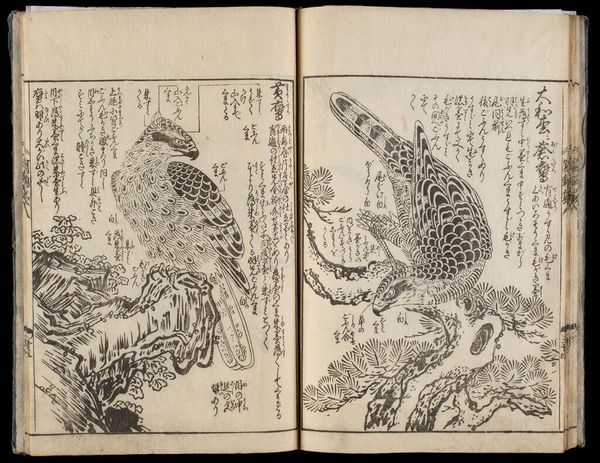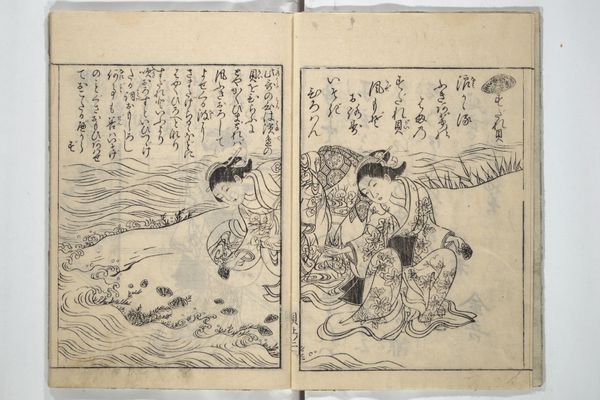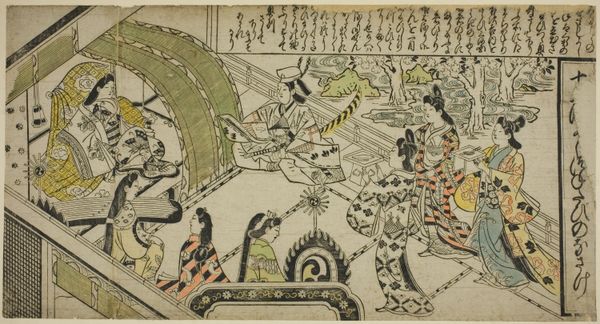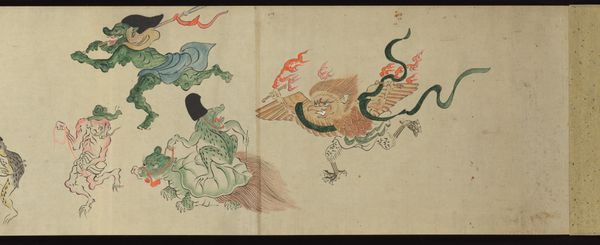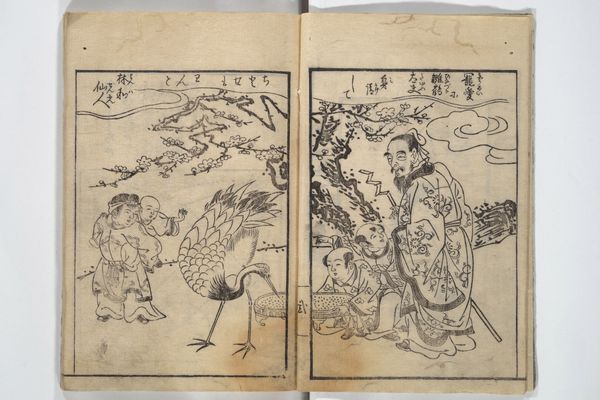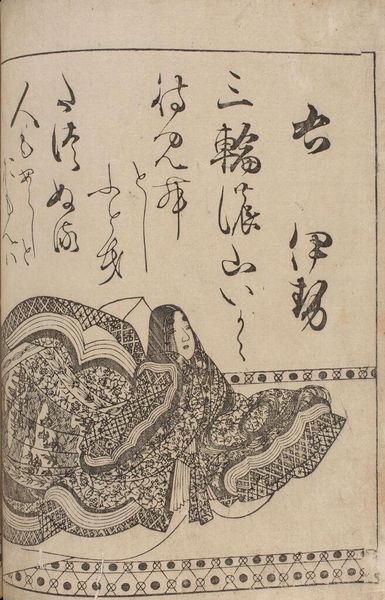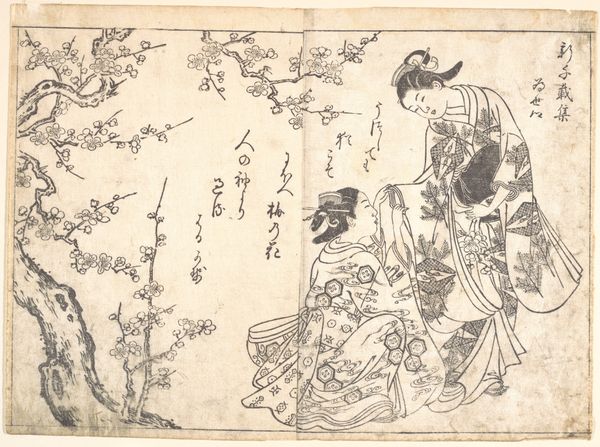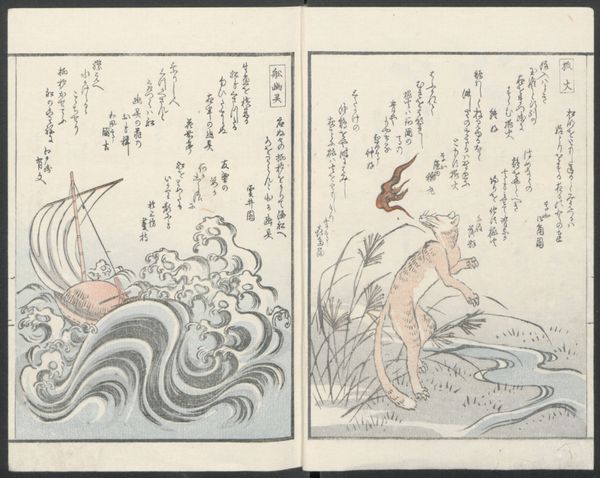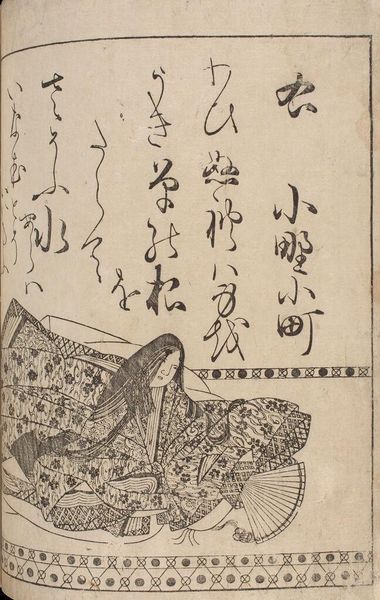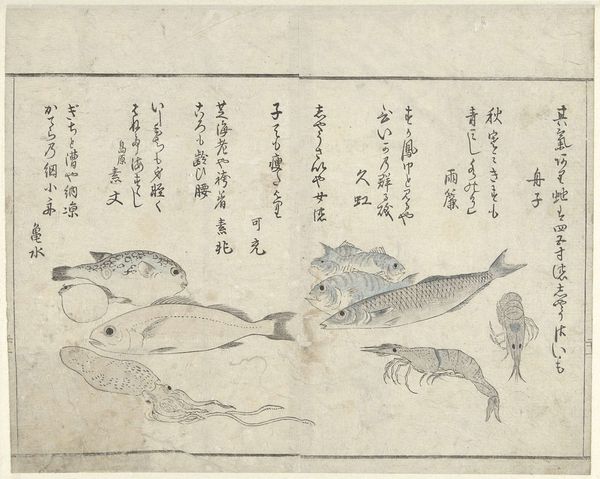
drawing, paper, ink, woodcut
#
drawing
#
ink drawing
#
narrative-art
#
pen drawing
#
pen sketch
#
book
#
asian-art
#
sketch book
#
ukiyo-e
#
paper
#
ink
#
woodcut
Dimensions: 3/16 x 5 x 6 7/8 in. (0.5 x 12.7 x 17.5 cm)
Copyright: Public Domain
Curator: Here we have a page from Kitagawa Utamaro's "Adventures of the Liar Manpachi," dating back to around 1780. This particular print, rendered in ink on paper through the woodcut technique, now resides in the Minneapolis Institute of Art. It looks as though the book is open in the middle for display, so it presents a combined scene across two pages. Editor: My first thought is how dramatic it is! A very imposing serpent dominates the scene. Its textured scales contrast so vividly with the stacked, smooth timber of what seems to be some sort of man-made construction in its path. There is a lot of interplay between natural and artificial elements here, or so it appears. Curator: Absolutely. It's a fascinating blend of folk narrative and popular culture. The Manpachi stories were quite prevalent and provided social commentary through humor and satire. Considering the role of storytelling in shaping social values, and its availability as a woodblock print, this imagery allowed these ideals to be shared across Japanese society. Editor: Looking at it from a materials perspective, the precise, controlled carving of the woodblock speaks to the skill of the artisans involved. How ink translates onto paper creates this detailed composition and that snake looks ready to leap right out of the page! Curator: The serpent is indeed powerful imagery, and not just as illustration. Culturally, the snake can be both a symbol of danger, even malevolence, or transformation, even good fortune depending on how and who depicts them. Here, Manpachi’s adventures probably used the snake as a humorous allegory. Editor: That makes sense. Seeing how prominent the stack of beams or timber is—perfectly aligned in uniform lengths and shapes— it almost takes on a quality of its own. Its material reality speaks of a relationship to the human effort of shaping and creating structures; is this also a possible reflection of cultural commentary? Curator: I believe that you may be onto something! The visual contrasts that the structure holds against the imposing and symbolically charged animal further develops that possibility and suggests an intent. That interplay may, itself, present Manpachi's challenges: How do tradition and ingenuity interplay? How do we deal with danger, through skill and intellect? Editor: Looking closer at the linear style and crafted elements, one has to consider how prints like this shaped broader cultural understanding of narratives, right? Curator: Precisely! This page reminds us how art served as a tool, both a mirror and a lens, in viewing 18th-century Japanese society. Editor: It gives you a newfound appreciation for the detailed labor embedded in creating even what appears as simple imagery on a book page!
Comments
No comments
Be the first to comment and join the conversation on the ultimate creative platform.


